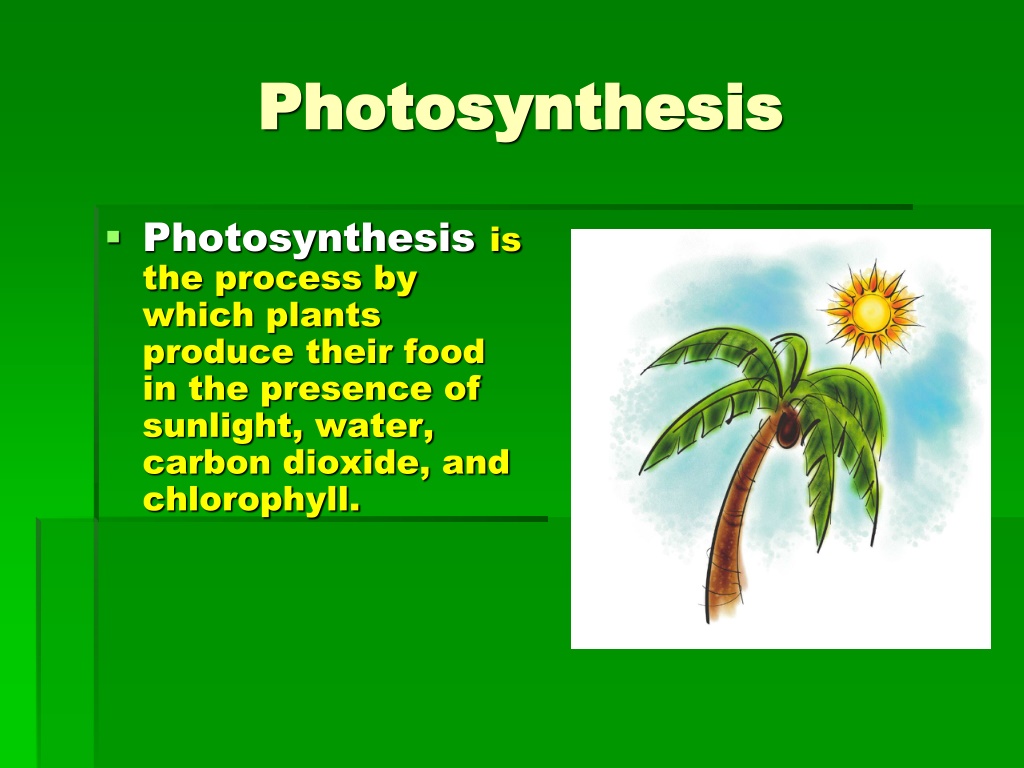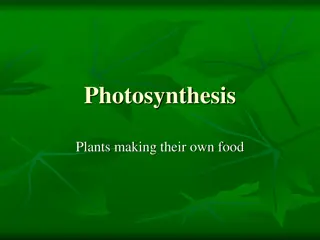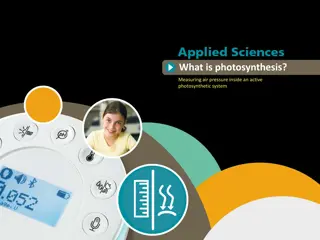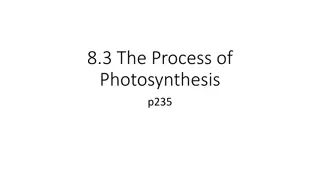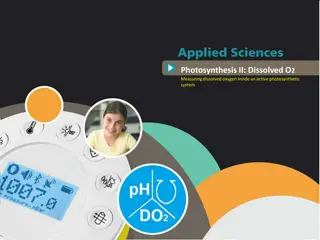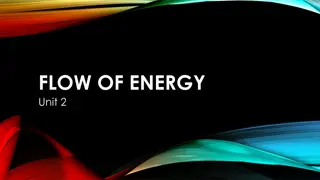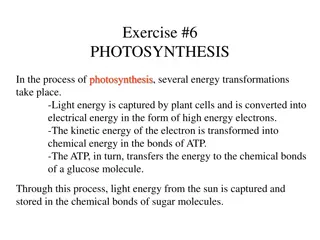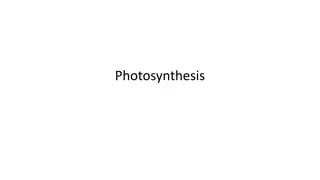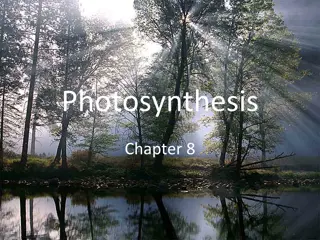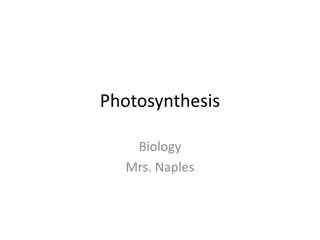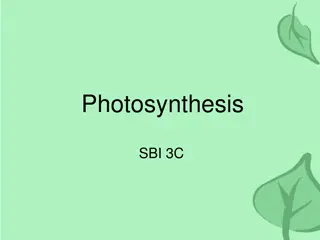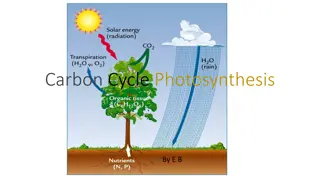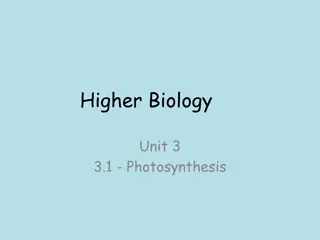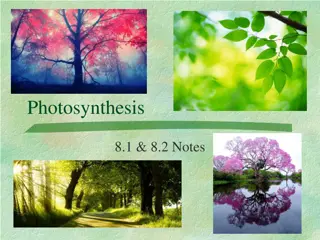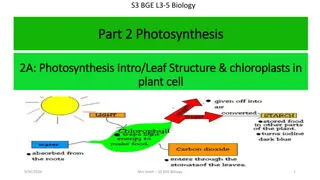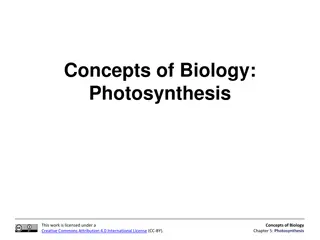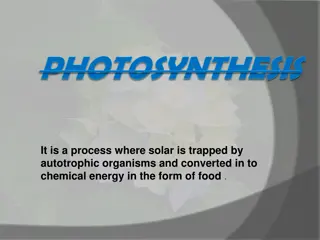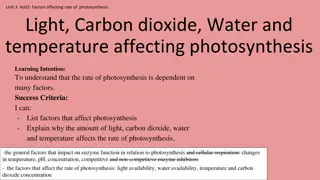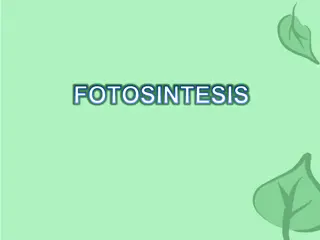Understanding Photosynthesis: The Process and Importance
Photosynthesis is a vital process where plants convert sunlight, water, and carbon dioxide into energy for growth. Plants, algae, and some bacteria carry out photosynthesis, utilizing chlorophyll to produce glucose, the primary source of energy for plants. The sun provides the energy essential for sustaining life through this process, highlighting the crucial role of photosynthesis in the ecosystem.
Download Presentation

Please find below an Image/Link to download the presentation.
The content on the website is provided AS IS for your information and personal use only. It may not be sold, licensed, or shared on other websites without obtaining consent from the author. Download presentation by click this link. If you encounter any issues during the download, it is possible that the publisher has removed the file from their server.
E N D
Presentation Transcript
Photosynthesis Photosynthesis Photosynthesis is the process by which plants produce their food in the presence of sunlight, water, carbon dioxide, and chlorophyll.
What happens during What happens during Photosynthesis? Photosynthesis? Plant cells convert the light energy from the sun into chemical energy in the form of ATP. The chloroplasts use the chemical energy stored in the ATP to form Glucose. This glucose is then distributed throughout the plant as food.
WHO carries out WHO carries out Photosynthesis? Photosynthesis? Plants, algae, and many single-celled organisms (bacteria) carry out photosynthesis
Energy Energy Where does the energy that sustains all life come from? The Sun!! Photosynthesis is the connection between energy that is released from the sun (solar energy) and the energy available for living organisms (chemical energy).
Materials Used Materials Used Carbon dioxide gas, sunlight and water are used during photosynthesis All of these come from the environment
How do plants get carbon How do plants get carbon dioxide? dioxide? Plants get carbon dioxide from the atmosphere. The carbon dioxide is absorbed through stomata. Stomata are tiny holes or pores found in the leaves of plants.
What is the function of What is the function of the stomata? the stomata? Stomata help the leaves by absorbing carbon dioxide from the air. Stomata also allow oxygen produced during photosynthesis to escape into the atmosphere.
What is the equation for the What is the equation for the chemical reaction of chemical reaction of photosynthesis? photosynthesis?
What is the equation for the What is the equation for the chemical reaction of chemical reaction of photosynthesis? photosynthesis? Six molecules of carbon dioxide react with six molecules of water to form 1 molecule of glucose and six molecules of oxygen.
Materials Produced: Materials Produced: During photosynthesis water and carbon dioxide from the environment are combined to make an organic compound, called glucose. Glucose is a simple carbohydrate or a simple sugar. Oxygen gas is also formed during photosynthesis. The oxygen that is produced is released into the environment.
WHEN does WHEN does Photosynthesis occur? Photosynthesis occur? Photosynthesis occurs in plant cells when light is available. Generally this is during the day time.
WHERE does WHERE does Photosynthesis occur? Photosynthesis occur? Photosynthesis occurs in the chloroplasts of plant cells when they are exposed to light
What are chloroplasts? What are chloroplasts? Chloroplasts are green colored organelles that contain chlorophyll.
WHY is Photosynthesis WHY is Photosynthesis important? important? Photosythesis helps plants produce their own food Plants are the first step in the food chain. We cannot make our own food (glucose, energy), we must get our food from plants. The oxygen released during photosynthesis is necessary for all living things.
Cellular Respiration Cellular Respiration
What is Cellular What is Cellular Respiration? Respiration? The release of chemical energy for use by cells. It s the plants way of eating (consuming) the glucose.
What is Cellular What is Cellular Respiration? Respiration? Once the energy that was in sunlight is changed into chemical energy by photosynthesis, an organism has to transform the chemical energy into a a form that can be used by the organism. This process is cellular respiration.
Describe Cellular Describe Cellular Respiration Respiration The breakdown of glucose molecules to release energy Takes place in all living things Is a step by step process
What is the chemical What is the chemical equation for cellular equation for cellular respiration? respiration?
Relationship between Relationship between Photosynthesis and Respiration Photosynthesis and Respiration The energy stored in glucose during photosynthesis is transferred to the chemical bonds of ATP All cells run on the energy released from ATP
